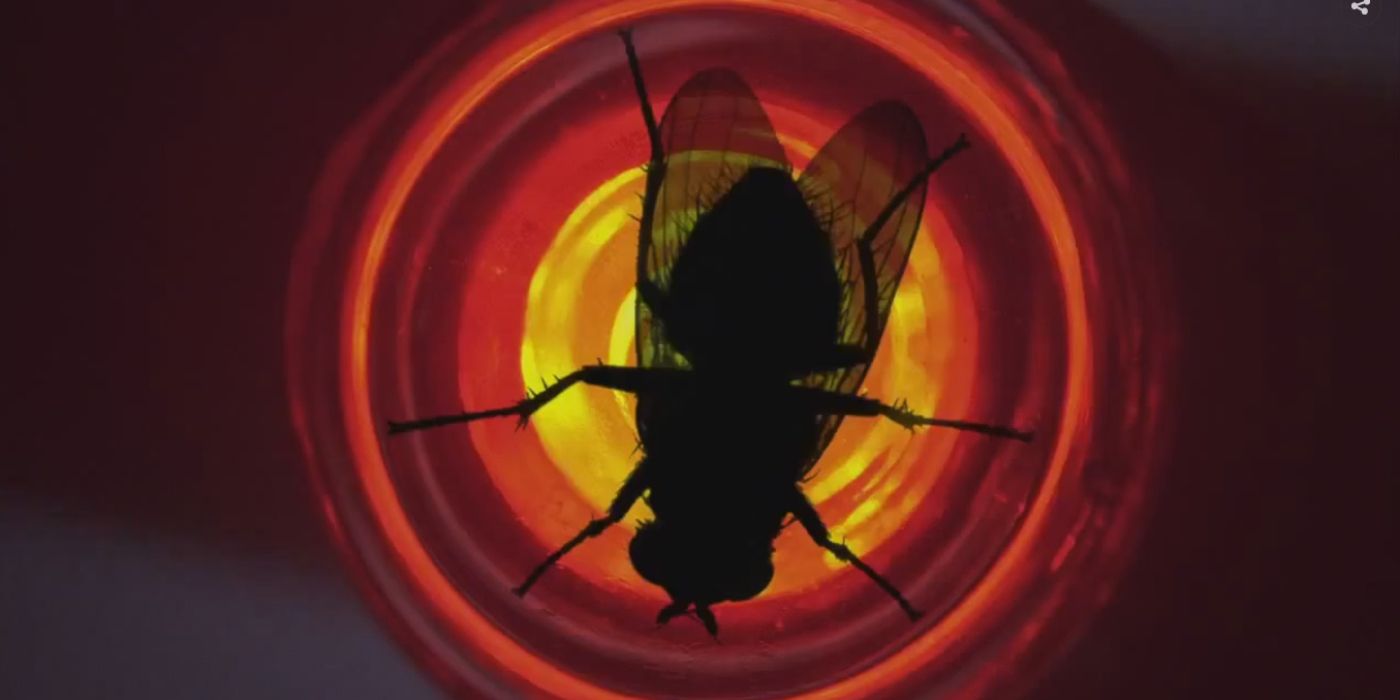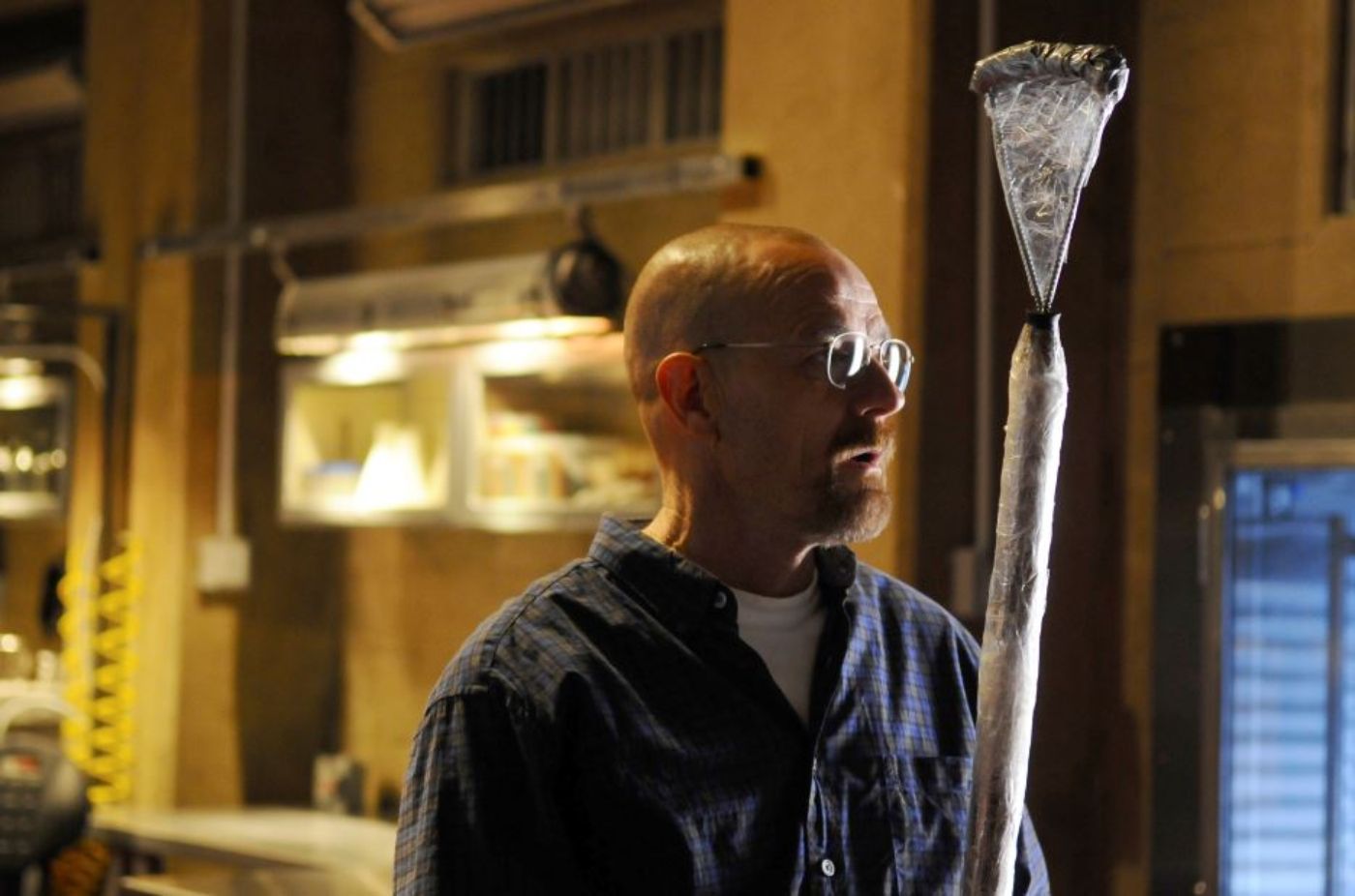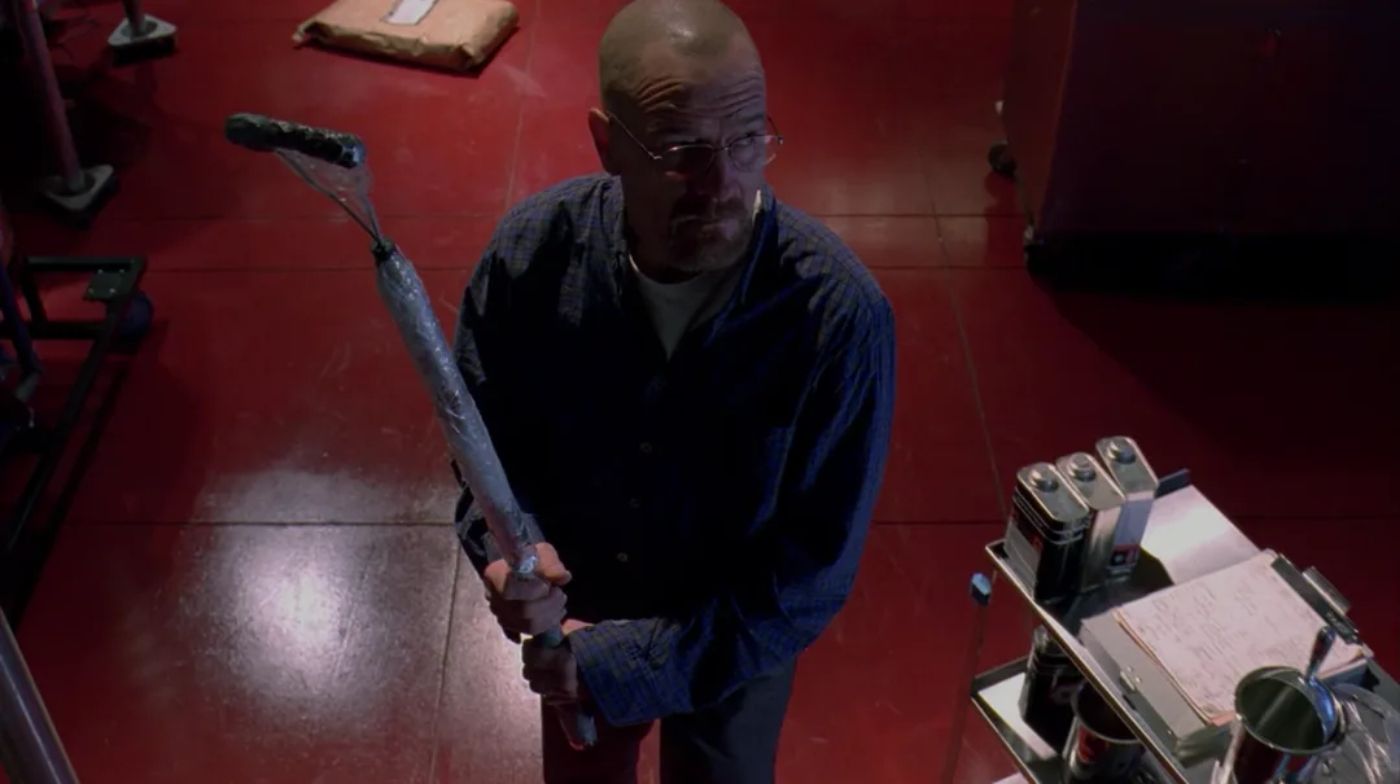Although Better Call Saul is approaching its series finale, its critically acclaimed predecessor Breaking Bad remains one of television’s most renowned series. The Emmy award-winning show starred Bryan Cranston as Walter White, a high school chemistry teacher who “breaks bad” after learning he has developed cancer. In order to raise money for his treatment and to make sure he has enough left to give to his wife Skyler (Anna Gunn), son Walter “Flynn” Jr. (RJ Mitte), and infant daughter Holly when he eventually passes, Walter partners up with a former student and high school dropout Jesse Pinkman (Aaron Paul) who has become a meth “cook” and drug dealer. At first, Walter and Jesse use an RV trailer as their base of operations, which often breaks down in the middle of the New Mexico desert. Later, Walter White’s alias “Heisenberg” becomes well known throughout Albuquerque, New Mexico, along with his sought-after blue meth. Walter and Jesse catch the attention of the chicken franchise owner of Los Pollos Hermanos, Gus Fring (Giancarlo Esposito), and, through their sleazy lawyer Saul Goodman (Bob Odenkirk), are roped in on Fring’s drug empire across the southwest. Through it all, Walter and Jesse must avoid being caught by Walter’s brother-in-law, DEA agent Hank Schrader (Dean Norris).
Rian Johnson’s infamous “Fly” episode comes around halfway through the series, an appropriate place for a bottle episode that actually succeeds in reigning in the show’s stakes. By Season 3, the show had expanded its scope and come far from Walter and Jesse’s RV, introducing new characters such as Fring’s personal hitman and security guard Mike Ehrmantraut (Jonathan Banks). Just as Walter and Jesse’s blue meth grew in its expanse and reach, so too did the stakes of the show. However, the later seasons seemed to get away from their dynamic — as more new characters were introduced, the less time Walter and Jesse got to spend together. Rather than running their own drug business and seeing the direct consequences of their actions, Walter and Jesse were relegated to mere minions to Gus Fring’s overall operations. They were, quite literally, subordinated — to an underground bunker below a chicken factory. However, despite the limited setting, “Fly” makes use of the bunker’s closed quarters to highlight Breaking Bad’s best qualities. Specifically, the episode demonstrates how Walter and Jesse’s relationship has grown and changed since Season 1.
From the very first frame of the episode, before the title card is shown, a montage of up-close shots of a fly is accompanied by a medley of the lullaby “Hush Little Baby,” a song about how a mother and father will buy anything for their child to be happy. Thematically, the song has plenty to do with the show. Walter, a father, is willing to do anything for the happiness and comfort of his family. Skyler, after Walter confesses the truth to her, complies with Walter’s plan to get rich off of meth. Literally — that is, in terms of plot — the prologue announces that this episode isn’t like most. For the most part, “Fly” does nothing to move the plot forward. Instead, the episode largely takes place in a single location with a series of conversations between the show’s main characters. Completely disregarding this bottle episode of Breaking Bad, however, would miss the whole point and backbone of the show, as “Fly” was an opportunity to return to what made the show so great in the first place. Walter’s stubborn obsession to kill the fly and Jesse’s insistence to quit reflect their overall dynamic since day one: Walter isn’t willing to give up so that his family will be well off without him, while Jesse is willing to settle for anything to be comfortable for now.
One scene that captures each of their perspectives involves a monologue from Jesse recalling a memory of an opossum making a living in his aunt's house. They called an exterminator who succeeded in trapping and getting rid of it. “Is there a discernible point to this story?” Walter asks impatiently. When Jesse continues his anecdote, however, the parallels between his aunt’s story and Walter’s are made clear. Even though the opossum was gone from her house, Jesse’s aunt refused to believe it. She kept thinking she heard the opossum crawling around, and even began carrying around a cane to use against the pest. Her delusion turned into an obsession until Jesse and his family found out that her cancer had actually spread to her brain, explaining her paranoia. Ultimately, the opossum that terrorized Jesse’s aunt and even the fly that now terrorizes Walter all symbolize Walter’s obsession and ambition — and it is this stubborn hubris that will lead to Walter’s tragic fate. This scene is specifically significant since the monologue is given by Jesse, who had experienced his aunt’s death from cancer and now finds another adult figure to look up to in Walter, who is also dealing with the disease. Jesse does want to make enough money for himself so that he can quit cooking meth, but he also genuinely wants to save Walter from what’s coming for him if he keeps going down the same path.
The episode was a chance — halfway through the series of five seasons plus a Netflix film to go along with — to look back at where Walter and Jesse began. Instead of a broken-down RV trailer, they’ve made their way into an underground bunker with high-end equipment, demonstrating how far they’ve come. The growth of their characters and relationships with each other also shows their progression. At the end of this episode, it is Jesse who kills the fly—the inverse of Walter’s first kill in Season 1, Episode 3, when he eventually lived up to his promise of killing Krazy 8, the town's previous meth distributor.
After they’ve killed the fly and are ready to go home, Walter confronts Jesse about stealing meth from Fring, issuing a warning that he won't be able to protect his protégé if Fring discovers the theft. It’s a rare moment of Walter’s genuine care and concern. However, Jesse isn’t having it, insisting that he isn't asking for Walter's defense before his former teacher drives away. The truth is that Walter will care for and protect Jesse until the very end, despite his ego and manipulative ways. In Breaking Bad’s final season, once Walter is revealed to be the notorious Heisenberg, he returns to Albuquerque to settle all his loose ends — one of them being Jesse, who has been kept as a prisoner and forced to cook blue meth for Todd (Jesse Plemons) and his uncle. Walter succeeds in freeing Jesse, but whereas his longtime partner gets to escape, Walter is left to die.
In many ways, “Fly” captures the small scale yet high stakes at the center of Walter and Jesse’s meth operation. If anyone were to find out — especially Walter’s brother-in-law Hank who works at the DEA — their whole lives and family’s livelihoods would fall apart. This is what plays out in Breaking Bad’s final season, but along the way, the show doesn't always lean on this dynamic tension between its two leads. The show is built on the pseudo father and son story between Walter and Jesse, and how Walter’s ambitions and hubris come at the cost of his humbled and humiliated partner. What makes "Fly" so impactful within the overall scope of Breaking Bad is that it doesn’t just focus on the past; it also foreshadows how Walter and Jesse’s relationship will ultimately unfold.



